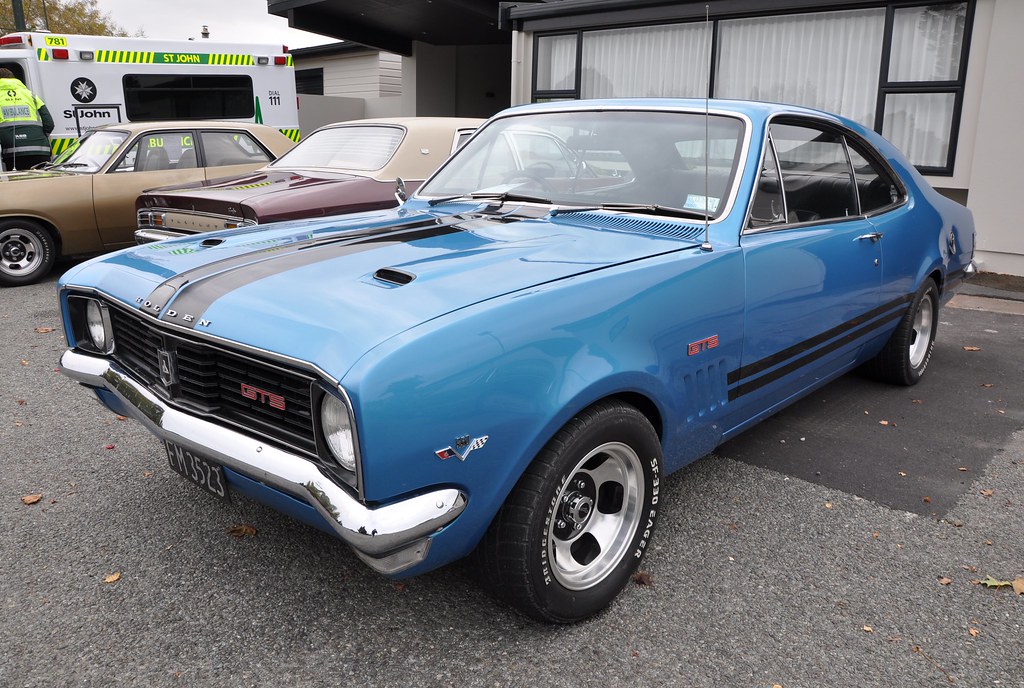
Pontiac, oh Pontiac! Just the name conjures images of roaring V8s, smoking tires, and designs that could stop traffic cold. This wasn’t just another car brand; it was a phenomenon, a heartbeat of American automotive passion that once dominated streets and racetracks alike. For decades, Pontiac was General Motors’ undisputed champion of excitement, consistently pushing boundaries with innovative engineering and bold designs, delivering cars that weren’t just modes of transport but extensions of personality, attitude, and raw, unadulterated speed.
The muscle car era? Pontiac didn’t just participate; it *created* it. With pioneers like the GTO, it rewrote the rulebook, proving that serious performance could be affordable and accessible to the masses. Its commitment to power, style, and affordability created some of the most coveted vehicles ever produced. Even when regulations tightened and the automotive landscape shifted, Pontiac found ways to inject adrenaline into its lineup, churning out legends like the Trans Am that transcended mere machinery to become undeniable pop culture icons, their stories intertwined with the very fabric of American cinema and television.
And while the brand may have driven off into the sunset in 2010, its final years perhaps a little bleak, the vibrant spirit of Pontiac still burns bright in the hearts of gearheads and enthusiasts everywhere. We look back at these magnificent creations not just with a gentle sigh of nostalgia, but with a genuine yearning, a fervent wish that we could somehow coax these titans of tarmac back into production. So, buckle up, because we’re about to embark on an exhilarating journey through some of the most iconic Pontiac cars from the past, machines that were, and still are, absolutely worth every single penny and every ounce of our fervent admiration.

1. **1964 Pontiac GTO: The Original Game-Changer**The year is 1964, and the automotive world is about to be shaken to its very core. Pontiac, with a stroke of rebellious genius led by Chief Engineer John DeLorean and his visionary team, unleashed a beast that would forever redefine performance. They took a humble midsize Tempest, crammed in a colossal 389-cubic-inch V8 engine. Buyers were then given the tantalizing option of a Tri-Power carb setup paired with a glorious 4-speed manual transmission, transforming a respectable sedan into a street-legal rocket. The result? The 1964 GTO, a car that didn’t just ride the wave of performance; it *sparked a revolution* and turned Pontiac into a muscle car powerhouse almost overnight, forever etching its name into automotive history.
This wasn’t just a powerful engine in a small package; it was an ethos, a statement of intent. It was affordable, quick, and perfectly dialed in for street performance, making it the undisputed hero of every speed demon across America. The base 325 horsepower engine could propel the car from 0 to 60 mph in a blistering 6.6 seconds, figures that were jaw-dropping for the era. This was raw, unadulterated power, delivered with a directness that captivated an entire generation, proving great style and performance didn’t have to come with flashy badging or wild graphics.
The GTO was originally conceived as an obscure option on the Tempest, a sly maneuver that paid off handsomely. Pontiac executives bet on the fact that buyers would see the GTO option for what it was — essentially, a separate performance model — and they did, buying up the ’64 GTO in droves. Every GTO was fast, with even the standard variant making 325 horsepower, but the Tri-Power 389 engine with its officially quoted 358 horsepower output represented the best Pontiac had to offer.
The advertising proudly proclaimed the GTO as “The Great One,” a moniker it truly earned, targeting performance-minded younger buyers with its street credibility and formidable acceleration capabilities. This iconic vehicle’s success prompted every major American manufacturer to furiously develop competing muscle cars, igniting a horsepower war that would define an entire automotive generation, cementing Pontiac’s reputation as *the* brand for serious performance enthusiasts. The ’64 GTO is not merely a collectible; it’s a monumental piece of automotive heritage, a testament to what happens when innovation meets sheer horsepower.
Car Model Information: 1966 Pontiac GTO Coupe
Name: Pontiac GTO
Caption: 2005 Pontiac GTO
Manufacturer: Pontiac (automobile),Holden
Class: Mid-size car,Compact car,Mid-size car
Production: 1963–1974,2003–2006
Predecessor: Pontiac Tempest
Layout: Front-engine, rear-wheel-drive layout
ModelYears: 1964-1974 2004-2006
Categories: 1970s cars, 2000s cars, All articles with unsourced statements, Articles with short description, Articles with unsourced statements from October 2008
Summary: The Pontiac GTO is a front-engine, rear-drive, two-door, and four-passenger automobile manufactured and marketed by the Pontiac division of General Motors over four generations from 1963 until 1974 in the United States — with a fifth generation made by GM’s Australian subsidiary, Holden, for the 2004 through 2006 model years.
The first generation of the GTO is credited with popularizing the muscle car market segment in the 1960s. Some consider the Pontiac GTO to have started the trend with all four domestic automakers offering a variety of competing models.
For the 1964 and 1965 model years, the GTO was an optional package on the intermediate-sized Pontiac LeMans. The 1964 GTO vehicle identification number (VIN) started with 22, while the 1965 GTO VIN began with 237. The GTO was designated as a separate Pontiac model from 1966 through 1971 (VIN 242…). It became an optional package again for the 1972 and 1973 intermediate LeMans. For 1974, the GTO was an optional trim package on the compact-sized Ventura.
The GTO model was revived for the 2004 through 2006 model years as a captive import for Pontiac, a left-hand drive version of the Holden Monaro, itself a coupé variant of the Holden Commodore.
Get more information about: Pontiac GTO
Buying a high-performing used car >>>
Brand: Pontiac Model: GTO
Price: $59,991 Mileage: 4,408 mi.
Read more about: Revving Up Nostalgia: 14 Vintage ’60s Cars That Are Now Every Collector’s Gold Mine for Enthusiasts
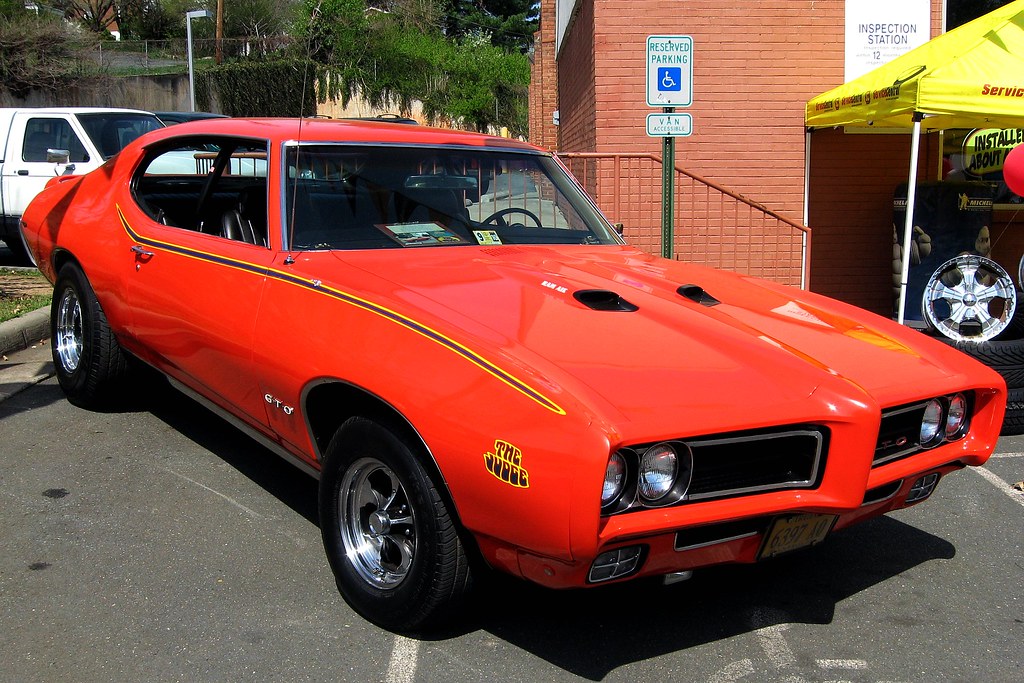
2. **1969 Pontiac GTO Judge: The Bold, Brash Statement**If the 1964 GTO was the opening salvo that started the muscle car power wars, then the 1969 GTO Judge was Pontiac’s loud, proud, and utterly unapologetic answer to the escalating conflict. This machine wasn’t content to just stand out; it demanded attention with its flamboyant Carousel Red paint – a hue so vibrant it practically screamed “look at me!” – wild decals, and an attitude that could peel paint off a wall. It was brash, fast, and unapologetically cool—the quintessential muscle car encapsulated in a single, audacious package designed for those who wanted to make a statement, not just a subtle suggestion.
Underneath that dazzling exterior, The Judge packed some serious heat, a formidable contender in the drag strips and street races of the late sixties. It came standard with a potent 400-cubic-inch Ram Air III V8, churning out a very respectable 366 horsepower, more than enough to put a smile on any driver’s face. But for those true power junkies, Pontiac offered the optional Ram Air IV, pushing performance even higher with an earth-shattering rumble and delivering an exhilarating punch that few cars of its era could match. This car was designed to be seen, heard, and felt, a true statement piece that left no doubt about its intentions or capabilities.
Introduced in 1969 to revitalize the GTO’s slowing sales from the previous year, The Judge took GTO performance to extreme levels. Its unique styling, including specific spoilers and the aforementioned distinctive orange paint, made it instantly recognizable on streets and drag strips across America, making it a dream car for many Pontiac enthusiasts. The original GTO was a legend, but The Judge added a layer of irreverent charisma, a sort of wink and a nod that said, “Yes, we know how good we are, and we’re not afraid to show it.”
The relative rarity of certain Judge variants has helped keep resale values incredibly strong over the years. These open-top marvels have sold for eye-watering sums at auction, with one example even crossing the $1 million mark in 2023. While that specific car might stretch the definition of “good value,” most examples of the ’70 GTO Judge fetch far, far less, making them a tantalizing prospect for collectors. This isn’t just a car; it’s a piece of automotive art, a testament to an era when horsepower was king and style was its flamboyant, unforgettable queen.
Car Model Information: 2020 Jeep Wrangler Sport
Name: Pontiac GTO
Caption: 2005 Pontiac GTO
Manufacturer: Pontiac (automobile),Holden
Class: Mid-size car,Compact car,Mid-size car
Production: 1963–1974,2003–2006
Predecessor: Pontiac Tempest
Layout: Front-engine, rear-wheel-drive layout
ModelYears: 1964-1974 2004-2006
Categories: 1970s cars, 2000s cars, All articles with unsourced statements, Articles with short description, Articles with unsourced statements from October 2008
Summary: The Pontiac GTO is a front-engine, rear-drive, two-door, and four-passenger automobile manufactured and marketed by the Pontiac division of General Motors over four generations from 1963 until 1974 in the United States — with a fifth generation made by GM’s Australian subsidiary, Holden, for the 2004 through 2006 model years.
The first generation of the GTO is credited with popularizing the muscle car market segment in the 1960s. Some consider the Pontiac GTO to have started the trend with all four domestic automakers offering a variety of competing models.
For the 1964 and 1965 model years, the GTO was an optional package on the intermediate-sized Pontiac LeMans. The 1964 GTO vehicle identification number (VIN) started with 22, while the 1965 GTO VIN began with 237. The GTO was designated as a separate Pontiac model from 1966 through 1971 (VIN 242…). It became an optional package again for the 1972 and 1973 intermediate LeMans. For 1974, the GTO was an optional trim package on the compact-sized Ventura.
The GTO model was revived for the 2004 through 2006 model years as a captive import for Pontiac, a left-hand drive version of the Holden Monaro, itself a coupé variant of the Holden Commodore.
Get more information about: Pontiac GTO
Buying a high-performing used car >>>
Brand: Pontiac Model: GTO Judge
Price: $25,000 Mileage: 54,707 mi.
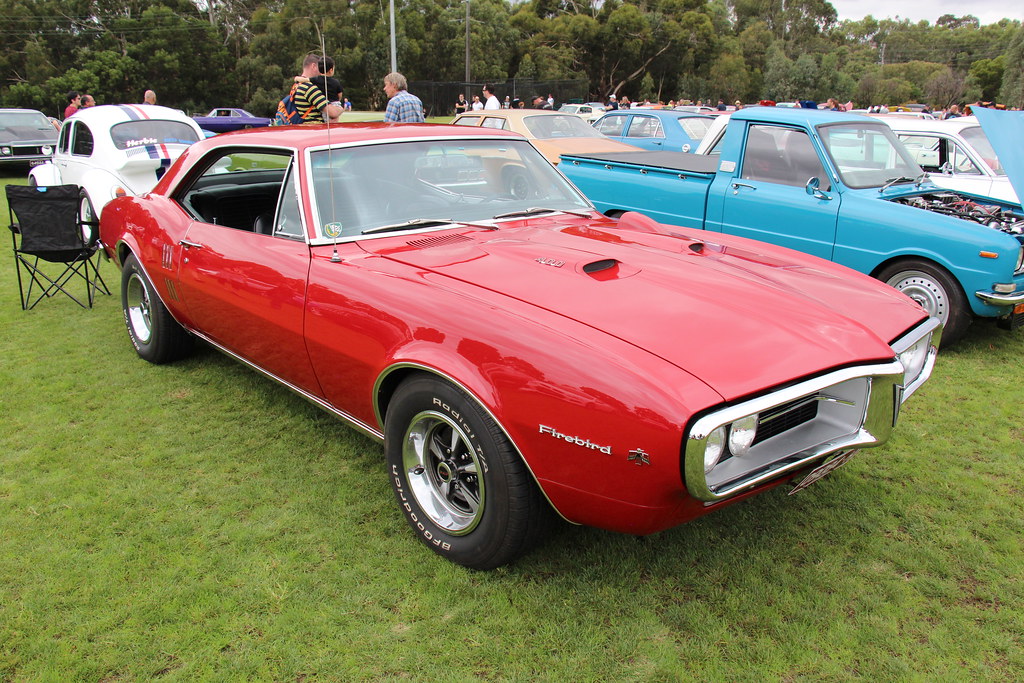
3. **1977 Pontiac Firebird Trans Am: The Pop Culture Icon**Hold on tight, because when we talk about pop culture legends, the 1977 Pontiac Firebird Trans Am isn’t just in the conversation – it *is* the conversation. This car didn’t just ride the muscle car wave; it became a veritable supernova, skyrocketing into automotive folklore thanks to a certain film involving a black-and-gold icon and a determined bandit. With its signature black-and-gold paint scheme, the utterly iconic screaming eagle hood decal, and those undeniably cool removable T-tops, it oozed serious attitude from every single pore, proclaiming its presence with audacious flair.
While its 6.6-liter V8 might not have been the fastest in an absolute, raw horsepower sense, especially when compared to the unrestricted monsters of the previous decade (its most potent V8 engine churning out 200 horsepower), it sounded mean, looked the part, and delivered a driving experience unlike anything else. This was a car that offered performance that mattered on the street, not just on a spec sheet, perfectly balancing brute force with an unparalleled aesthetic. It had presence, it had flair, and it absolutely knew how to make an entrance, commanding respect and admiration wherever it roared.
The magic truly happened when “Smokey and the Bandit” hit the big screen. The movie wasn’t just a blockbuster; it was an automotive love letter that immortalized the ’77 Trans Am, transforming it into a definitive symbol of 1970s swagger and cementing its status as one of the most recognizable muscle cars ever built. Seeing it in the film inspired thousands of buyers, causing the model to enjoy several years of unprecedented sales figures. The sheer demand for this movie star on wheels transformed it from a mere car into a cultural phenomenon.
Even without its big-screen role, its distinctive design alone, particularly that legendary hood bird graphic, would have likely made it an icon. It represented a unique blend of aggressive styling and accessible performance, a dream car for a generation. This Trans Am wasn’t just a car; it was an event, an era, a pure slice of American cool and a testament to how popular culture can elevate a machine to legendary status. It’s one of the best-known Trans Am years ever built, and for very good reason.
Car Model Information: 2020 Jeep Wrangler Sport
Name: Pontiac Firebird
Caption: The second, third, and fourth generations of,the Pontiac Firebird Trans Am
Manufacturer: Pontiac (automobile)
Production: February 23, 1967 – August 30, 2002
ModelYears: 1967 – 2002
Class: Pony car,Muscle car
Platform: GM F platform
Related: Chevrolet Camaro
Layout: Front engine, rear-wheel-drive layout
Categories: 1970s cars, 1980s cars, 1990s cars, 2000s cars, All articles with dead external links
Summary: The Pontiac Firebird is an American automobile built and produced by Pontiac from the 1967 to 2002 model years. Designed as a pony car to compete with the Ford Mustang, it was introduced on February 23, 1967, five months after GM’s Chevrolet division’s platform-sharing Camaro. This also coincided with the release of the 1967 Mercury Cougar, Ford’s upscale, platform-sharing version of the Mustang.
The name “Firebird” was also previously used by GM for the General Motors Firebird series of concept cars in the 1950s.
Get more information about: Pontiac Firebird
Buying a high-performing used car >>>
Brand: Pontiac Model: Firebird Trans Am
Price: $25,000 Mileage: 54,707 mi.
Read more about: Remember These? 14 Classic Cars From the 1980s That Everyone Forgot About

4. **1968 Pontiac Firebird: The Original Pony Car Powerhouse**Before the Trans Am became a Hollywood sensation, the original Firebird was already blazing its own trail, a powerful and necessary response from Pontiac to the runaway success of the Ford Mustang. The 1968 Pontiac Firebird marked an important evolutionary year for the model, building on the foundation of the GM F-body platform, which it gracefully shared with the Chevrolet Camaro. While it bore striking resemblance to its Chevy cousin, Pontiac infused it with enough differentiating factors – subtle styling cues and unique engine options – to give it its own distinct personality and flair.
This was a car designed for pure driving excitement, a true performer that aimed squarely at the “pony car” segment. From a power standpoint, the Firebird was almost unmatched in its class, offering a compelling blend of speed and agility. The compact 108.00-inch wheelbase granted it a remarkably quick turning radius, making it nimble and engaging on the road. Coupled with its rear-wheel-drive platform, it performed exactly like a true pony car should, a characteristic that drivers loved most, offering a visceral connection to the asphalt.
With an impressive 37,937 V8-powered Firebirds sold in 1968, it was abundantly clear that Pontiac had hit a sweet spot with the motoring public. The more exclusive Ram Air variant of the car, featuring a distinctive rocker hood and custom air inlets around the front of the vehicle, pushed its performance credentials even further, signaling its sporting intentions. Ads at its launch proudly showcased the car’s road performance and highlighted its claimed superiority over rivals like the Ford Mustang and Plymouth Barracuda, a bold tactic that demonstrably worked.
The allure of the Firebird wasn’t just in its raw performance; it was in its irresistible combination of fun and good looks. The car was inherently fun to drive and undeniably attractive to look at, a lethal combination that resonated deeply with buyers and solidified its place in Pontiac’s burgeoning performance lineup. The limited production of only 15,528 convertibles for this year makes those open-top versions particularly worthwhile investments today, testament to the enduring appeal of this original Firebird. When you think about a car that truly put Pontiac on the map with raw, accessible thrills, the ’68 Firebird absolutely takes the cake.
Car Model Information: 1985 Pontiac Firebird
Name: Pontiac Firebird
Caption: The second, third, and fourth generations of,the Pontiac Firebird Trans Am
Manufacturer: Pontiac (automobile)
Production: February 23, 1967 – August 30, 2002
ModelYears: 1967 – 2002
Class: Pony car,Muscle car
Platform: GM F platform
Related: Chevrolet Camaro
Layout: Front engine, rear-wheel-drive layout
Categories: 1970s cars, 1980s cars, 1990s cars, 2000s cars, All articles with dead external links
Summary: The Pontiac Firebird is an American automobile built and produced by Pontiac from the 1967 to 2002 model years. Designed as a pony car to compete with the Ford Mustang, it was introduced on February 23, 1967, five months after GM’s Chevrolet division’s platform-sharing Camaro. This also coincided with the release of the 1967 Mercury Cougar, Ford’s upscale, platform-sharing version of the Mustang.
The name “Firebird” was also previously used by GM for the General Motors Firebird series of concept cars in the 1950s.
Get more information about: Pontiac Firebird
Buying a high-performing used car >>>
Brand: Pontiac Model: Firebird
Price: $23,500 Mileage: 12,209 mi.
Read more about: The 11 Iconic Rides We’re Passionately Pining For: A MotorTrend Wishlist for the Ultimate Automotive Revival
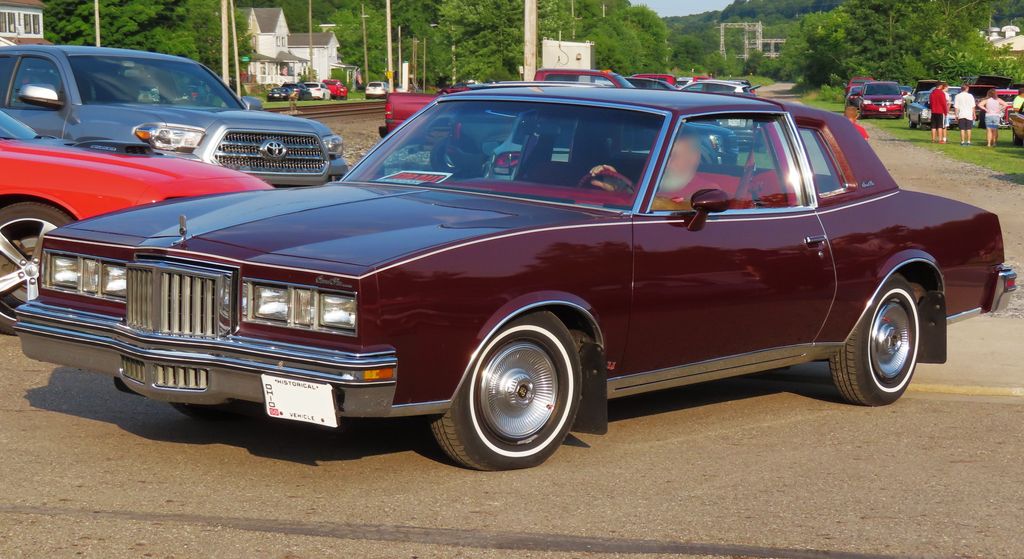
5. **1969 Pontiac Grand Prix SJ: Where Luxury Met Power**In an era where brute force often overshadowed finesse, the 1969 Pontiac Grand Prix SJ emerged as a revelation, a masterclass in proving that you could have formidable power without sacrificing an ounce of class. This wasn’t just another muscle car; it was a sophisticated statement, a luxurious performance machine that practically invented the personal luxury segment. With its deep-set, aggressive front end, featuring those effortlessly cool hidden headlights and a dramatic, sweeping body, the redesigned ’69 model offered a sleek, almost predatory aesthetic that was miles ahead of its time, turning heads with its sheer presence.
Underneath that famously long, elegant hood resided serious punching power, betraying the Grand Prix SJ’s refined exterior. It housed a mighty 428-cubic-inch V8 engine, a true powerhouse capable of churning out an exhilarating 390 horsepower. This wasn’t just a comfortable cruiser; it was a high-performance grand tourer designed to devour highways with effortless grace and formidable speed. The Grand Prix SJ nailed the balance between refined elegance and raw muscle, offering a driving experience that was both exhilarating and profoundly sophisticated, making it a luxury muscle car before that was even a widely recognized thing.
The genius of the ’69 Grand Prix was in its meticulous attention to detail, both inside and out. The exterior boasted those sleek, aggressive lines, a striking silhouette that conveyed both speed and sophistication. Step inside, and the luxury continued unabated. The plush interior was a haven of high-end touches, from comfortable bucket seats and rich materials to comprehensive instrumentation that rivaled the best European grand tourers of the era. It redefined what a personal luxury car could be, offering an unparalleled blend of opulent comfort and undeniable performance.
This was a car for those discerning individuals who wanted to go fast, but do so in ultimate style and comfort, making a powerful statement without resorting to overt flamboyance. The available 428-cubic-inch V8 producing up to 390 horsepower ensured it packed serious punch under its long hood, proving that grace could indeed be powerful. The ’69 Grand Prix SJ wasn’t just a car; it was a lifestyle, a bold declaration that luxury and power could, and should, coexist beautifully, leaving an indelible mark on Pontiac’s illustrious history as a pioneer of sophisticated speed.
Car Model Information: 2020 Jeep Wrangler Sport
Name: Pontiac Grand Prix
Caption: 2004–2008 Pontiac Grand Prix
Manufacturer: Pontiac (automobile)
ModelYears: 1962–2008
Class: Personal luxury car
Layout: Front-engine, rear-wheel-drive layout
Successor: Pontiac G8
Platform: unbulleted list
Categories: 1960s cars, 1970s cars, 1980s cars, 1990s cars, 2000s cars
Summary: The Grand Prix is a line of automobiles produced by the Pontiac Division of General Motors from 1962 until 2002 as coupes and from 1989 through 2008 model years as four-door sedans.
First introduced as a full-size performance coupe for the 1962 model year, the model repeatedly varied in size, luxury, and performance over successive generations. The Grand Prix was the most expensive coupe Pontiac offered until the 1970s, when the Bonneville Brougham and the Firebird Trans Am became more exclusive; the Grand Prix moved into the intermediate personal luxury car and later the mid-size market segments.
All Grand Prixs from 1962 through 1972 were pillarless hardtops (except for the 1967 convertible).
Get more information about: Pontiac Grand Prix
Buying a high-performing used car >>>
Brand: Pontiac Model: Grand Prix SJ
Price: $25,000 Mileage: 54,707 mi.
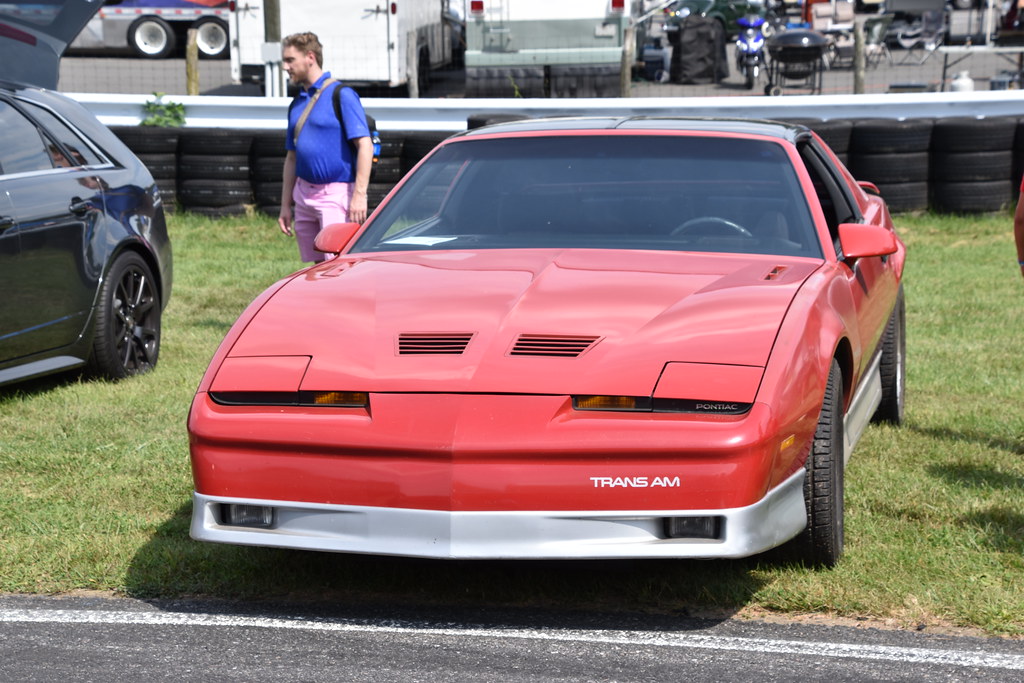
6. **1970 Pontiac Firebird Formula 400: The Understated Performer**While its flashier sibling, the Trans Am, often hogged the spotlight with its screaming eagles and bold graphics, demanding attention from every angle, the 1970 Pontiac Firebird Formula 400 was the ultimate sleeper muscle machine. This was the Firebird for those who preferred to let their performance do the talking, delivering similar capabilities to the Trans Am without all the visual fanfare. It was a wolf in sheep’s clothing, ready to surprise unsuspecting rivals with its understated power and phenomenal handling, proving that true potency doesn’t always need to shout.
The heart of this stealthy performer was its Ram Air 400 V8, an engine that meant serious business and delivered a potent 345 horsepower. Those distinctive twin hood scoops weren’t just for show; they were entirely functional, feeding hungry, cool air directly into the engine, subtly hinting at the raw power lurking beneath without giving the whole game away. This wasn’t a car built for posing; it was a serious driver’s machine, benefiting from upgraded suspension and handling components that made it incredibly capable on winding roads, at the drag strip, and during spirited drives, offering a level of refinement often overlooked in the muscle car frenzy.
The Formula 400 was a testament to Pontiac’s meticulous engineering and its commitment to offering diverse performance options. It came with upgraded suspension and handling, making it a truly serious driver’s car that could hold its own against more flamboyant competition. If you wanted power, agility, and a genuinely thrilling driving experience without demanding every eye on the road, the Formula 400 was undoubtedly the Firebird to own. It combined aggressive performance with a more restrained, sophisticated aesthetic, appealing to enthusiasts who appreciated its pure, unadulterated engineering and its ability to deliver thrills without ostentation.
This model exemplified Pontiac’s ability to cater to different tastes within its performance lineup, offering a potent alternative that was every bit as iconic in its own right as the Trans Am, yet carving its own niche for those who appreciated subtlety. Its appeal lay in its honest, direct approach to performance, providing a fantastic platform for driving enthusiasts. It’s a true gem that deserved more attention than it got back in the day, and frankly, still does today, continuing to impress collectors with its blend of power and poise.
Beyond the raw, tire-shredding muscle machines we’ve just celebrated, Pontiac’s brilliance wasn’t limited to drag strips and stoplight showdowns. The brand was a true maestro of automotive artistry, crafting vehicles that blended power with unparalleled style, sophistication, and a sheer joy of cruising. From full-size cruisers that carried a formidable punch to luxury models dripping with chrome and futuristic flair, Pontiac consistently delivered unforgettable machines that captured the essence of American driving. These were cars that dared to be different, pushing boundaries not just in speed, but in aesthetic and overall driving experience, ensuring that Pontiac’s legacy extends far beyond its most famous quarter-mile legends. So, let’s explore more of these magnificent beasts, each a testament to Pontiac’s boundless innovation and enduring appeal.
Car Model Information: 2020 Jeep Wrangler Sport
Name: Pontiac Firebird
Caption: The second, third, and fourth generations of,the Pontiac Firebird Trans Am
Manufacturer: Pontiac (automobile)
Production: February 23, 1967 – August 30, 2002
ModelYears: 1967 – 2002
Class: Pony car,Muscle car
Platform: GM F platform
Related: Chevrolet Camaro
Layout: Front engine, rear-wheel-drive layout
Categories: 1970s cars, 1980s cars, 1990s cars, 2000s cars, All articles with dead external links
Summary: The Pontiac Firebird is an American automobile built and produced by Pontiac from the 1967 to 2002 model years. Designed as a pony car to compete with the Ford Mustang, it was introduced on February 23, 1967, five months after GM’s Chevrolet division’s platform-sharing Camaro. This also coincided with the release of the 1967 Mercury Cougar, Ford’s upscale, platform-sharing version of the Mustang.
The name “Firebird” was also previously used by GM for the General Motors Firebird series of concept cars in the 1950s.
Get more information about: Pontiac Firebird
Buying a high-performing used car >>>
Brand: Pontiac Model: Firebird Formula 400
Price: $25,000 Mileage: 54,707 mi.
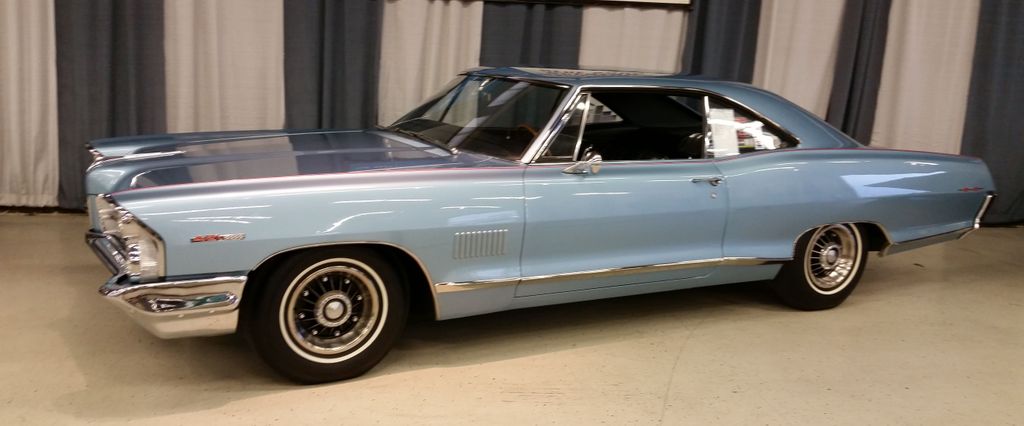
7. **1967 Pontiac Catalina 2+2: Full-Size Muscle with Performance Flair**The Catalina 2+2 stands as a glorious testament to Pontiac’s ability to inject serious performance into even its most generously proportioned vehicles. This wasn’t just a full-size cruiser; it was Pontiac’s unapologetic big-body muscle machine, designed for those who wanted to command the road with a powerful presence and a surprising turn of speed. It was massive in size, yes, but remarkably quick on its feet, defying expectations and embodying Pontiac’s philosophy of driving excitement for every segment. This car was a statement: you could have grandeur and brute force all rolled into one magnificent package.
Under that expansive hood resided the mighty 428-cubic-inch V8, an engine that provided the Catalina 2+2 with an incredibly strong kick. Imagine the exhilarating sensation of unleashing that power, especially when paired with the optional, gloriously tactile 4-speed manual transmission! It transformed what could have been a sedate boulevard cruiser into a genuine contender, a car that could effortlessly devour highways while still delivering spine-tingling acceleration when called upon. It was truly Pontiac’s distinctive way of adding an undeniable performance flair to a full-size car, creating a driving experience that was both comfortable and utterly thrilling.
But the 2+2 was more than just brute strength; it was meticulously styled to match its formidable capabilities. It boasted unique aggressive styling cues that hinted at its sporting intentions, setting it apart from its more conventional Catalina siblings. Inside, drivers were treated to comfortable bucket seats and exclusive sport trim, details that underscored its performance-oriented character. This wasn’t just a car you drove; it was a car you experienced, a boulevard bruiser with a muscle car heart that made every journey an adventure.
Even today, the 1967 Catalina 2+2 remains a cherished classic, a rare blend of spacious luxury and raw power that speaks volumes about Pontiac’s diverse engineering prowess. It’s a magnificent reminder that performance didn’t always come in a compact package; sometimes, it arrived with sweeping lines and a commanding presence, ensuring that every drive was an event. This is a machine that perfectly encapsulates the era where size met speed in a spectacular fashion.
Car Model Information: 2020 Jeep Wrangler Sport
Name: Pontiac 2+2
Caption: 1965 Pontiac 2+2 Sports Coupe
Aka: Parisienne 2+2 (Canada)
Manufacturer: Pontiac (automobile)
Class: Full-size car
Production: 1964—1967 in the U.S.
Assembly: Pontiac Assembly,Pontiac, Michigan,Arlington Assembly,Arlington, Texas,Doraville Assembly,Doraville, Georgia,Fairfax Assembly,Kansas City, Kansas,Linden Assembly,Linden, New Jersey,South Gate Assembly,South Gate, California
BodyStyle: coupe,convertible
Engine: Pontiac V8 engine#389
Transmission: 3 or 4-speed manual, 3-speed automatic
Length: 214 in
Abbr: on
Height: 48 in
Wheelbase: 121 in
Related: Pontiac Catalina
Categories: 1970s cars, 2+2 coupés, All articles with unsourced statements, Articles with short description, Articles with unsourced statements from March 2017
Summary: The Pontiac 2+2 is a full size automobile that was manufactured by Pontiac, built on the B-body chassis. It debuted for the 1964 model year as a trim-only option for the Pontiac Catalina, with special door panels, bucket seats with a center console, and exterior badging. Pontiac marketed the 2+2 as the “big brother” to the popular Pontiac GTO.
Beginning in 1965 the name Catalina was no longer found on the car, although it was still an option on the Catalina. The 2+2 was equipped with a 421 cu in (6.9 L) V8 engine, dual exhaust, heavy-duty front springs as well as unique exterior body trim. It continued on the same platform, but became a separate Pontiac series for the 1966 model year. The 2+2 reverted to an option on the Catalina for 1967 and was discontinued in the United States the same year due to poor sales.
It continued as a series in Canada until 1970. All Canadian-built 2+2s were equipped with a Pontiac body on a Chevrolet chassis, with the full range of Chevrolet engines available from inline 6-cylinder to big-block V8.
The name 2+2 reappeared briefly in 1986 on the Pontiac Grand Prix 2+2 G-body “aerobody” coupe, of which 1,225 were built.
Get more information about: Pontiac 2+2
Buying a high-performing used car >>>
Brand: Pontiac Model: Catalina 2+2
Price: $25,000 Mileage: 54,707 mi.
Read more about: Unleash the Beasts: 14 Legendary American Cars That Roared Through the 1960s, Forging an Unforgettable Automotive Decade
.jpg/1200px-1957_Pontiac_Star_Chief_(19545567434).jpg)
8. **1957 Pontiac Star Chief: Fifties Luxury, Futuristic Design, and Early Performance**Step back in time to the vibrant, optimistic era of the 1950s, and you’ll find the 1957 Pontiac Star Chief shining brightly as Pontiac’s undisputed top-of-the-line offering. This car didn’t just make an entrance; it had presence for days, commanding attention with its sheer scale and breathtaking design. It was a rolling sculpture that perfectly encapsulated the post-war American dream, a potent blend of luxury, cutting-edge performance, and undeniable flair that few other cars of its era could even begin to match. This was automotive art, a vision of the future crafted for the present.
Its design was a masterclass in fifties extravagance: long, low, and absolutely loaded with chrome, reflecting the era’s fascination with gleaming brightwork. The stylish two-tone paint schemes added another layer of sophistication, contrasting beautifully with the iconic jet-age tailfins that soared skyward, suggesting speed and aerodynamic prowess even at a standstill. Every curve, every line, every piece of trim on the Star Chief screamed opulence and forward-thinking design, making it an instant classic and a head-turner on any street corner or grand avenue. It was, quite simply, stunning.
Underneath its glamorous exterior, the Star Chief packed some remarkable innovation for its time. You had the option to specify Pontiac’s groundbreaking Strato-Streak V8 engine, and for those truly seeking to push the boundaries, an advanced fuel injection system was available. This was a truly rare and cutting-edge feature for the era, showcasing Pontiac’s commitment to early performance innovations and setting it apart from many of its contemporaries. This wasn’t just about looking good; it was about moving forward, about delivering a refined and powerful driving experience.
The 1957 Star Chief was more than just a car; it was a symbol of ambition and technological advancement, a definitive statement from Pontiac about what a luxury car could be. It elegantly brought together the best of period styling with a forward-looking approach to engineering, ensuring that it remains an iconic representation of fifties automotive excellence. This magnificent machine continues to captivate, reminding us of a time when cars were truly dreams on wheels.
Car Model Information: 2020 Jeep Wrangler Sport
Manufacturer: Pontiac (automobile)
Layout: FR layout
Caption: 1957 Pontiac Star Chief
Class: Full-size
Production: 1954–1966
Name: Pontiac Star Chief
Predecessor: Pontiac Streamliner
Successor: Pontiac Executive
Categories: 1950s cars, 1960s cars, Articles with short description, Cars introduced in 1954, Commons category link is on Wikidata
Summary: The Pontiac Star Chief is an automobile model that was manufactured by Pontiac between 1954 and 1966. It was Pontiac’s top trim package on the Pontiac Chieftain, with later generations built on longer wheelbases, and serving as the foundation platform for the Pontiac Bonneville. The car was easily identified by three and four star-like trim features along varying areas of the car, a feature all Star Chiefs were equipped with star arrangements.
Get more information about: Pontiac Star Chief
Buying a high-performing used car >>>
Brand: Pontiac Model: Star Chief
Price: $25,000 Mileage: 54,707 mi.

9. **1963 Pontiac Bonneville: Elegance, Power, and Flagship Status**In the early 1960s, the Pontiac Bonneville emerged as a shining example of how power and poise could not only coexist but truly elevate a vehicle to flagship status. This wasn’t merely a mode of transport; it was a declaration of sophistication and performance, a car that confidently demonstrated you could enjoy high-end style without ever sacrificing serious, road-devouring power. The 1963 Bonneville was Pontiac’s pinnacle, a masterful blend of opulent comfort and genuine driving thrill that cemented its place in automotive legend.
For those with a thirst for speed, the Bonneville delivered in spades. With the available 421 Super Duty V8 engine, fed by a trio of Tri-Power carburetors, this elegant cruiser could easily keep pace with — and often outrun — many of the era’s dedicated muscle cars. This was a sophisticated beast, capable of delivering blistering acceleration while maintaining an air of refined composure. It was a vehicle that invited spirited driving, proving that true performance didn’t need to be overtly aggressive to be utterly exhilarating. The power was there, ready and waiting.
The Bonneville’s smooth, flowing lines and exquisitely crafted, upscale interior distinguished it from virtually everything else on the road. It was a favorite among discerning drivers who desired to travel quickly, but preferred to do so without shouting about it. The interior was a sanctuary of luxury, featuring premium materials, thoughtful ergonomics, and an overall ambiance that spoke of quality and meticulous attention to detail. This was a car that offered a first-class experience, whether you were cruising the boulevards or embarking on a cross-country adventure.
The 1963 Bonneville perfectly embodied Pontiac’s vision for a grand touring car, balancing robust performance with an undeniable sense of style and comfort. It wasn’t just fast; it was beautiful, and it made every drive feel special. This is a car that collectors still covet today, not just for its inherent beauty and power, but for what it represented: the ultimate expression of Pontiac’s commitment to delivering an extraordinary driving experience that was both elegant and electrifying.
Car Model Information: 1964 Pontiac Bonneville
Name: Pontiac Bonneville
Caption: 2000–2005 Pontiac Bonneville
Manufacturer: Pontiac (automobile)
Production: 1958–2005,1983–2005 (Canada)
Assembly: Pontiac Assembly,Pontiac, Michigan
Class: Full-size car
Layout: FR layout
Predecessor: Pontiac Star Chief,Pontiac Executive
Successor: Pontiac G8
Categories: 1950s cars, 1960s cars, 1970s cars, 1980s cars, 1990s cars
Summary: The Pontiac Bonneville is a model line of full-size or mid-size rear-wheel drive (until 1987) or front-wheel drive cars manufactured and marketed by Pontiac from 1957 until 2005.
The Bonneville (marketed as the Parisienne in Canada until 1981), and its platform partner, the Grand Ville, are some of the largest Pontiacs ever built; in station wagon body styles they reached just over 230 inches (5.8 m) long. They were also some of the heaviest cars produced at the time at 5,000 pounds (2,300 kg) or more.
The Bonneville nameplate was introduced as a limited production performance convertible during the 1957 model year, its name taken from the Bonneville Salt Flats in Utah, an early site of U.S. automobile racing and numerous world land speed records.
Get more information about: Pontiac Bonneville
Buying a high-performing used car >>>
Brand: Pontiac Model: Bonneville
Price: $79,999 Mileage: 1,376 mi.
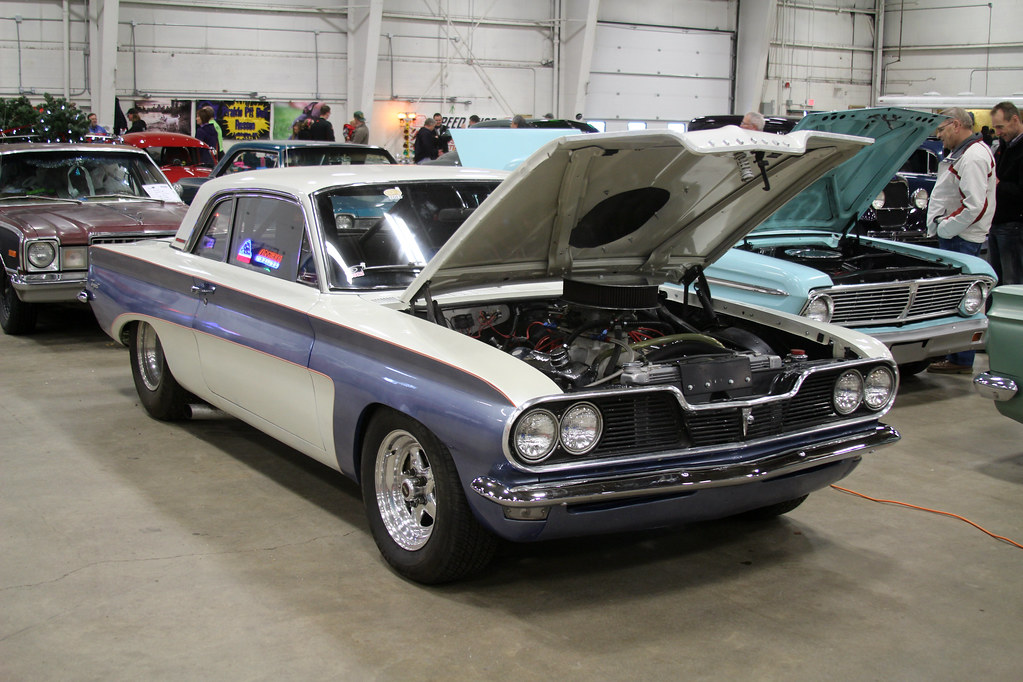
10. **1965 Pontiac Tempest LeMans: The Unsung Hero, Paving the Way**While the legendary GTO often stole the thunder and basked in the spotlight of the burgeoning muscle car era, it’s crucial to remember the car that helped pave the way: the 1965 Pontiac Tempest LeMans. This was an unsung hero, a beautifully clean and subtly styled machine that, on first glance, might have appeared less ostentatious than its more celebrated sibling. However, beneath that unassuming exterior lay the potential for fire-breathing performance, proving that true greatness doesn’t always need a fanfare to announce its arrival. It was a quiet storm, waiting to be unleashed.
The true genius of the ’65 Tempest LeMans lay in its incredible versatility and performance potential. You could order it with the very same fire-breathing V8 engines found in the GTO, transforming this seemingly docile car into a genuine asphalt shredder. Being lighter and inherently more agile than some of its contemporaries, the LeMans offered a perfect platform for performance upgrades, making it a favorite among those who knew how to truly unlock a car’s hidden capabilities. It was a vehicle that rewarded the discerning enthusiast, offering superb dynamics and exhilarating power when equipped correctly.
This model stood as a testament to the idea that great style and exceptional performance didn’t have to come with flashy badging or wild graphics. The LeMans presented a more restrained, sophisticated aesthetic, allowing its capabilities to speak for themselves. Often overlooked in favor of its more famous stablemate, it offered a compelling alternative for drivers who appreciated understated power and classic lines. It was a masterclass in quiet confidence, a car that delivered genuine thrills without needing to shout about it from the rooftops.
The 1965 Tempest LeMans, though not always at the forefront of the muscle car narrative, played a vital role in Pontiac’s performance story. It demonstrated the brand’s commitment to offering powerful and engaging vehicles across its lineup, laying crucial groundwork for the GTO’s success. For collectors and enthusiasts today, it represents a fantastic opportunity to own a piece of Pontiac’s performance heritage, a truly deserving classic that offers both timeless style and exhilarating speed, making it well worth every penny.
Car Model Information: 2020 Jeep Wrangler Sport
Caption: 1971 Pontiac LeMans Sport hardtop
Name: Pontiac LeMans
Manufacturer: Pontiac (automobile)
Production: 1961–1981 (U.S.),1971–1983 (Canada),1988–1993 (South Korea)
Class: Compact car
Successor: Pontiac 6000
Categories: 1970s cars, 1980s cars, All Wikipedia articles needing clarification, All articles with unsourced statements, Articles with short description
Summary: The Pontiac LeMans is a model name applied to automobiles marketed by Pontiac. The name came from the French city of Le Mans, the site of the 24 Hours of Le Mans, the world’s oldest active sports car endurance race that was first held in 1923. Originally a trim upgrade package based on the Tempest, the LeMans became a separate model in 1963.
In its first five generations spanning from 1961 until 1981 (1983 in Canada), the LeMans was a domestic RWD car; the first generation was a compact, with Gens 2-5 intermediates. From 1988 through 1993 the LeMans name was resurrected for a sixth generation, a FWD subcompact badge-engineered version of the Daewoo LeMans manufactured by Daewoo in South Korea.
Pontiac produced some notable GT/performance versions in the RWD models. The 1st generation not only featured a front-engine/rear-transaxle that very nearly resulted in an ideal 50/50 weight distribution, but also included four-wheel independent suspension for nimble handling, and could be ordered with an optional Buick 215 aluminum V8 engine.
The Pontiac GTO is credited with popularizing the muscle car market segment of the 1960s, and by many as the first muscle car. The 1970 model year introduced the LeMans GT-37 package. The 1973-75 Grand Am and 1977 Can Am combined luxury with performance features to emulate European coupes, focusing on balancing handling with power.
Get more information about: Pontiac LeMans
Buying a high-performing used car >>>
Brand: Pontiac Model: Tempest LeMans
Price: $25,000 Mileage: 54,707 mi.
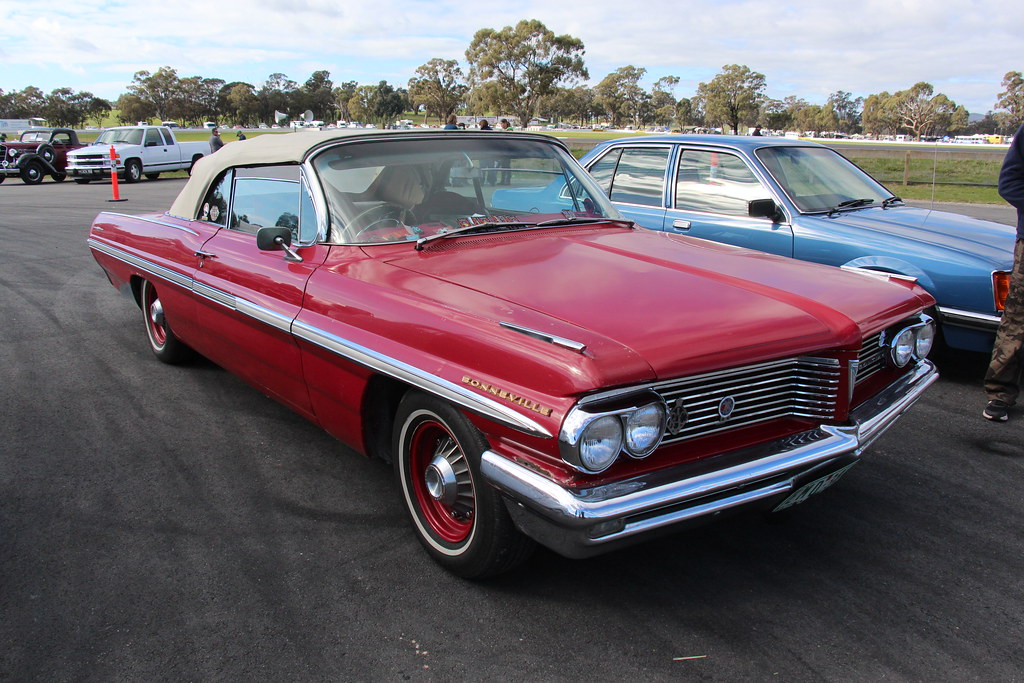
11. **1958 Pontiac Bonneville Convertible: A Chrome-Laden Showstopper**Prepare for a feast for the eyes, because the 1958 Pontiac Bonneville Convertible was an absolute showstopper from every conceivable angle. This isn’t just a car; it’s a rolling piece of art, a magnificent testament to the audacious styling and extravagant spirit of the late 1950s. It flawlessly combined sweeping body lines that flowed like liquid metal, an abundance of chrome-laden trim that sparkled under any light, and prominent tailfins that didn’t just mean business—they defined it. This car didn’t merely cruise; it made an entrance, leaving jaws agape in its wake.
Underneath all that glittering glamour, this Bonneville Convertible packed serious V8 power, ensuring its performance matched its show-stopping looks. It was propelled by a robust 370-cubic-inch engine, delivering an impressive 300 horsepower, a figure that was truly formidable for its time. This was far more than just a pretty cruiser; it was a high-performance convertible designed to eat up the miles with effortless grace and formidable speed. It offered a refined, luxurious feel that complemented its power, creating a driving experience that was both exhilarating and supremely comfortable, proving that style and substance could indeed go hand-in-hand.
The 1958 Bonneville Convertible was a pioneering model, marking the Bonneville’s debut in standalone form and playing a crucial role in revitalizing Pontiac’s fortunes. The factory offered a choice of two body styles, but the convertible was the rarer, more exclusive option, with just over 3,000 discerning buyers opting for its open-top charm. This rarity, combined with its unique and highly influential styling, makes it incredibly sought after today. Its success was so profound that it spawned a long line of following generations, yet arguably none quite captured the elegant charm of the 1958 original.
Drop the top, hit the highway, and you’ll instantly understand exactly why this chrome-draped beauty is still such a profound head-turner and a beloved classic. Its bold design, combined with its substantial V8 power, created an unforgettable driving sensation that continues to resonate with enthusiasts. The 1958 Bonneville Convertible wasn’t just a car; it was a golden age, a moment in time captured in steel and chrome, and it’s a car we desperately wish would return to grace our roads today.
Car Model Information: 2020 Jeep Wrangler Sport
Name: Pontiac Bonneville
Caption: 2000–2005 Pontiac Bonneville
Manufacturer: Pontiac (automobile)
Production: 1958–2005,1983–2005 (Canada)
Assembly: Pontiac Assembly,Pontiac, Michigan
Class: Full-size car
Layout: FR layout
Predecessor: Pontiac Star Chief,Pontiac Executive
Successor: Pontiac G8
Categories: 1950s cars, 1960s cars, 1970s cars, 1980s cars, 1990s cars
Summary: The Pontiac Bonneville is a model line of full-size or mid-size rear-wheel drive (until 1987) or front-wheel drive cars manufactured and marketed by Pontiac from 1957 until 2005.
The Bonneville (marketed as the Parisienne in Canada until 1981), and its platform partner, the Grand Ville, are some of the largest Pontiacs ever built; in station wagon body styles they reached just over 230 inches (5.8 m) long. They were also some of the heaviest cars produced at the time at 5,000 pounds (2,300 kg) or more.
The Bonneville nameplate was introduced as a limited production performance convertible during the 1957 model year, its name taken from the Bonneville Salt Flats in Utah, an early site of U.S. automobile racing and numerous world land speed records.
Get more information about: Pontiac Bonneville
Buying a high-performing used car >>>
Brand: Pontiac Model: Bonneville Convertible
Price: $25,000 Mileage: 54,707 mi.

12. **1970 Pontiac GTO: The Redesigned Legend’s Continued Reign**The 1970 Pontiac GTO is a name that resonates deeply within the soul of any true gearhead, a legend that commands respect without needing further introduction. Following its groundbreaking debut in ’64 and the flamboyant statement of ’69’s Judge, the 1970 model year brought a significant redesign that kept this icon looking fresh, vibrant, and utterly formidable amidst a surging wave of new rivals. This wasn’t just an update; it was a reaffirmation of the GTO’s dominance, a clear message that the original muscle car was still very much at the top of its game.
Critically, the engines under its redesigned hood were even more powerful than in prior years, ensuring the GTO’s performance credentials remained unchallenged. While Pontiac had launched the top-spec Judge trim the previous year in an effort to boost flagging sales, it wasn’t as successful as executives had hoped. This, however, worked out perfectly for modern-day enthusiasts! The relative rarity of certain GTO Judge variants has certainly helped keep their resale values incredibly strong over the years, with one jaw-dropping example even crossing the $1 million mark at auction in 2023.
But for those who yearned for GTO power without needing a seven-figure price tag, the standard 1970 GTO was the absolute sweet spot. While that particular record-breaking car might stretch the definition of “good value,” most examples of the ’70 GTO Judge, and especially the mid- and base-spec variants of the GTO, fetch far, far less. This keeps them tantalizingly within attainable territory for a wider range of Pontiac enthusiasts, proving that you don’t need to break the bank to own a genuine piece of American automotive royalty.
This redesigned GTO wasn’t just resting on its laurels; it was actively evolving, continually pushing the boundaries of what a muscle car could be. It cemented the GTO’s reputation for raw power, iconic styling, and an unforgettable driving experience, ensuring that its reign as ‘The Great One’ continued strong into the new decade. The 1970 GTO stands as a testament to Pontiac’s unwavering commitment to performance and design, a car that remains as desirable and impactful today as it was half a century ago. What a machine!
Car Model Information: 1966 Pontiac GTO Coupe
Name: Pontiac GTO
Caption: 2005 Pontiac GTO
Manufacturer: Pontiac (automobile),Holden
Class: Mid-size car,Compact car,Mid-size car
Production: 1963–1974,2003–2006
Predecessor: Pontiac Tempest
Layout: Front-engine, rear-wheel-drive layout
ModelYears: 1964-1974 2004-2006
Categories: 1970s cars, 2000s cars, All articles with unsourced statements, Articles with short description, Articles with unsourced statements from October 2008
Summary: The Pontiac GTO is a front-engine, rear-drive, two-door, and four-passenger automobile manufactured and marketed by the Pontiac division of General Motors over four generations from 1963 until 1974 in the United States — with a fifth generation made by GM’s Australian subsidiary, Holden, for the 2004 through 2006 model years.
The first generation of the GTO is credited with popularizing the muscle car market segment in the 1960s. Some consider the Pontiac GTO to have started the trend with all four domestic automakers offering a variety of competing models.
For the 1964 and 1965 model years, the GTO was an optional package on the intermediate-sized Pontiac LeMans. The 1964 GTO vehicle identification number (VIN) started with 22, while the 1965 GTO VIN began with 237. The GTO was designated as a separate Pontiac model from 1966 through 1971 (VIN 242…). It became an optional package again for the 1972 and 1973 intermediate LeMans. For 1974, the GTO was an optional trim package on the compact-sized Ventura.
The GTO model was revived for the 2004 through 2006 model years as a captive import for Pontiac, a left-hand drive version of the Holden Monaro, itself a coupé variant of the Holden Commodore.
Get more information about: Pontiac GTO
Buying a high-performing used car >>>
Brand: Pontiac Model: GTO
Price: $59,991 Mileage: 4,408 mi.
And so, as our exhilarating journey through the hallowed halls of Pontiac’s past comes to a close, we’re left with more than just nostalgic longing. We’re filled with a profound appreciation for a brand that consistently dared to be different, that fused raw power with audacious style, and that birthed automotive legends that continue to ignite passions worldwide. From the thundering roar of a GTO to the sleek elegance of a Bonneville, each Pontiac car wasn’t just a machine; it was a statement, a testament to American ingenuity and a sheer love for the open road. While the brand may have faded from the production lines, the spirit of Pontiac—that unbridled enthusiasm, that pursuit of pure driving excitement—will forever rev in the hearts of car enthusiasts. Wouldn’t it be utterly glorious to see these titans return, to once again witness the glorious sight of a new Pontiac roaring down the highway? A gearhead can dream, can’t they? And what a glorious dream it is!

